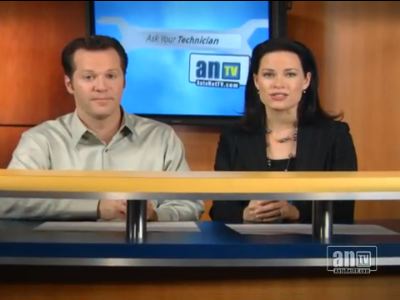St. Peter drivers may know that all 2008 model year and newer cars, mini-vans and light trucks in MN come with a tire pressure monitoring system. Many slightly older vehicles around the St. Peter area have these systems as well. A tire pressure monitoring system – called TPMS – consists of sensors on each wheel that measure tire pressure.
If tire pressure drops 25 percent below the vehicle manufacture’s recommended pressure, the sensor sends a signal to a monitoring unit that causes a warning to light up on the dashboard. When drivers see the warning light, they know it’s time to put some air in the tires.
There are many benefits to people in St. Peter who drive with properly inflated tires. First is cost savings. Running at the correct air pressure improves fuel economy. Driving on underinflated tires is like driving through sand – it drags down your fuel economy. Drivers in St. Peter will also see longer, more even tread wear so your tires will last longer.
Another important benefit of properly inflated tires is increased safety for St. Peter vehicles. Underinflated tires become hotter, and that heat can actually lead to tire failure – possibly resulting in an accident. Your vehicle and the tires themselves will just perform better and more safely around St. Peter with properly inflated tires.
Local MN consumer groups and law-makers advocate TPMS systems hoping that they will save lives, property damage and inconvenience. While you can’t put a value on saving a life, St. Peter drivers should keep in mind that TPMS systems aren’t free.
The systems themselves are added into the price of the vehicle. The batteries in the sensors will have to be replaced from time to time. Parts will break and need to be replaced. In colder climates around MN, ice and salt are frequent causes of failure.
In addition, there are other behind-the-scenes costs we want you to be aware of. Every time a tire is replaced, repaired, rotated or balanced, the tire technician has to deal with the TPMS system.
St. Peter service centers such as Autotronics of St. Peter must purchase equipment used to scan and reactivate the TPMS system after every tire service. Because older tire change equipment can damage TPMS sensors, your St. Peter area service center may need to buy expensive, new tire changers.
Since there is no uniformity among manufacturers, technicians need to be trained on several TPMS systems. These behind-the-scenes costs are very real to St. Peter service center managers.
That’s why the team at Autotronics of St. Peter is anxious for people in the St. Peter area to understand the financial impact of TPMS systems. In the past, we’ve been able to quickly and cheaply provide tire services and then pass the low cost on to customers as an expression of our good will. But now even these simple jobs take much longer and require equipment.
Sensors will need to be removed and reinstalled. Even a tire rotation will require that the monitor be reprogrammed to the new location of each tire. When a vehicle battery is disconnected, the TPMS system will need to be reprogrammed.
So when you start so see the cost of tire changes, flat repairs and rotations going up in MN, please keep in mind that it’s because of this new safety equipment. The team at Autotronics of St. Peter just wants to keep you safely on the road – and we’re committed to doing it at a fair price.
It’s important to remember that the TPMS warning only comes on when a tire is severely underinflated. You’ll still want to check your tire pressure regularly. At every fill-up is best, but you should check pressure at least once a month. Here’s wishing you safe travels.
Contact Autotronics of St. Peter for more information about Tire Pressure Monitoring Systems.
Autotronics of St. Peter
111 Jefferson Avenue
St. Peter, MN 56082
507.934.9290
http://autotronicsstpeter.com
